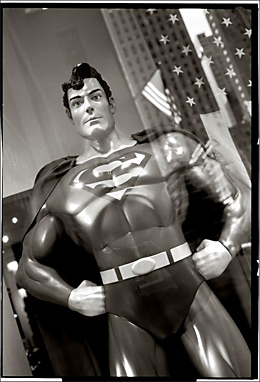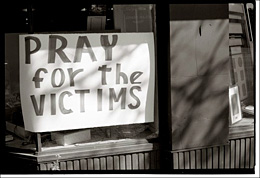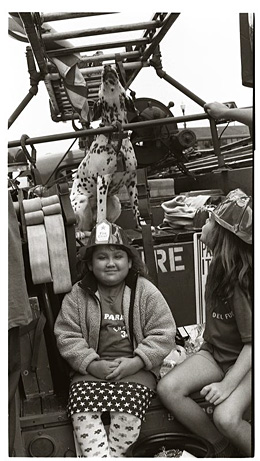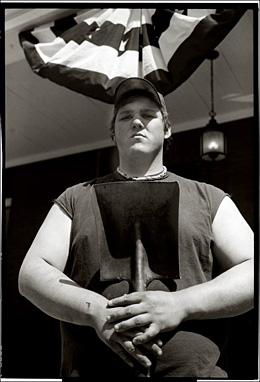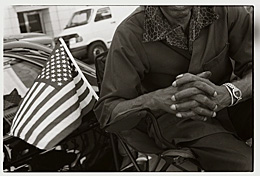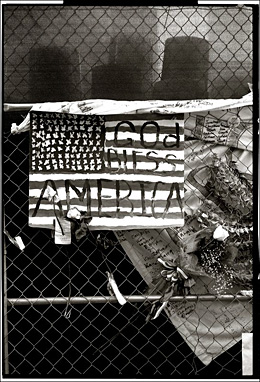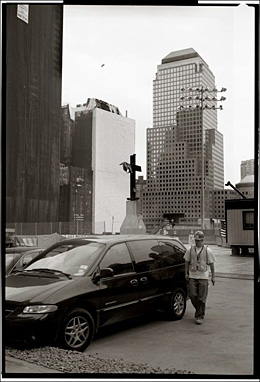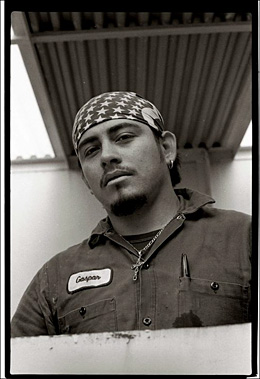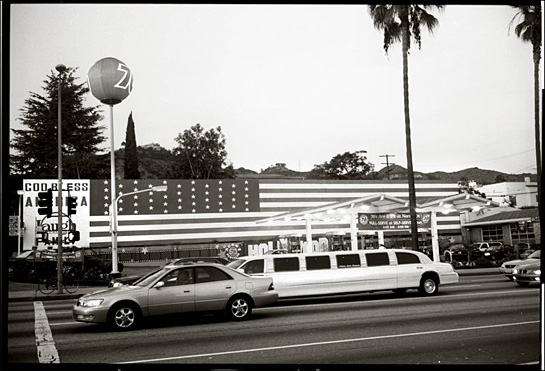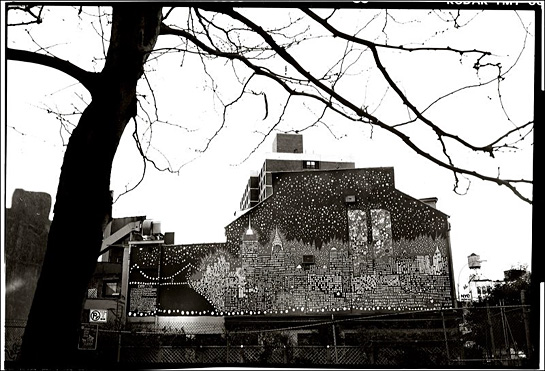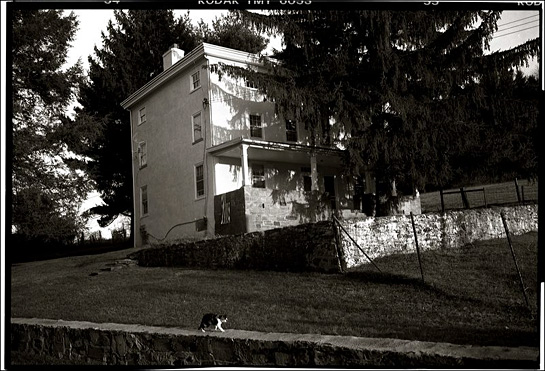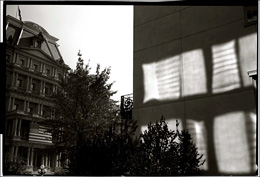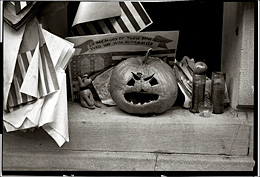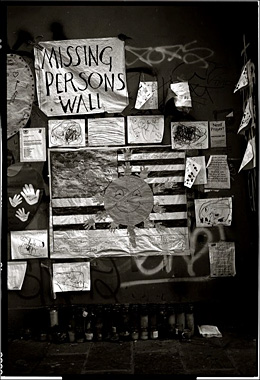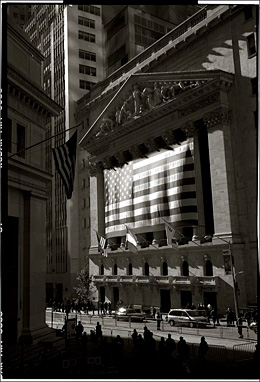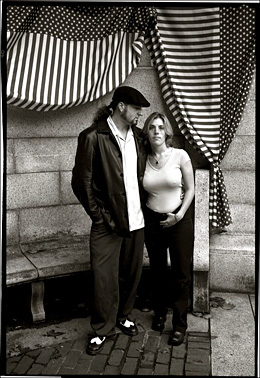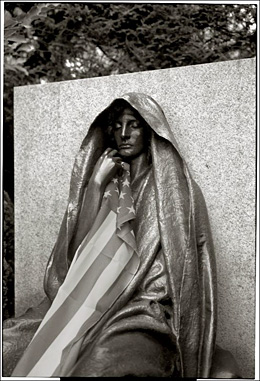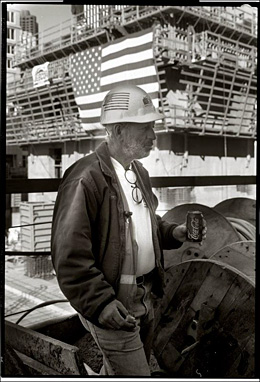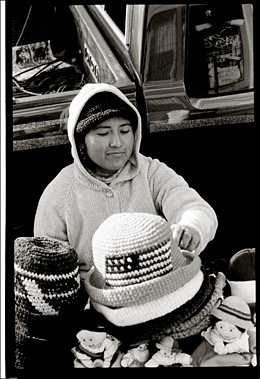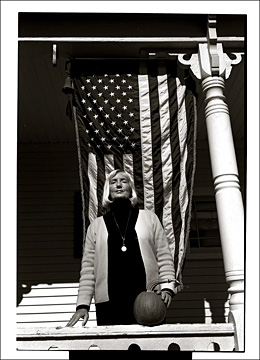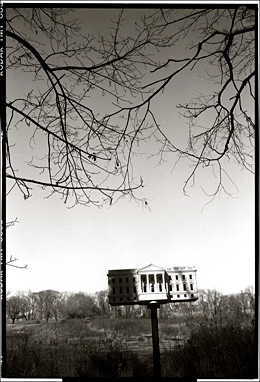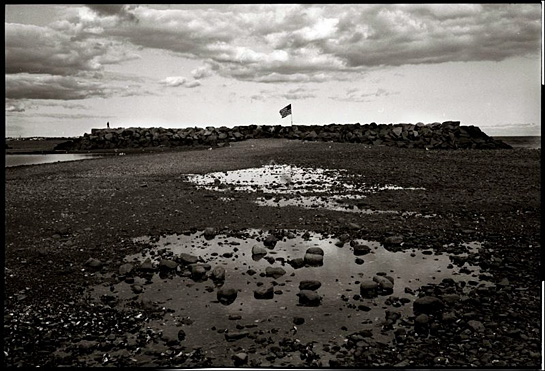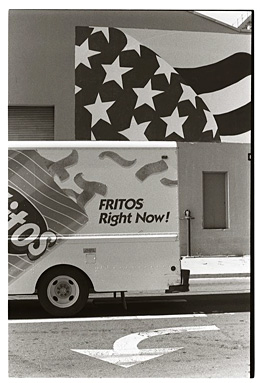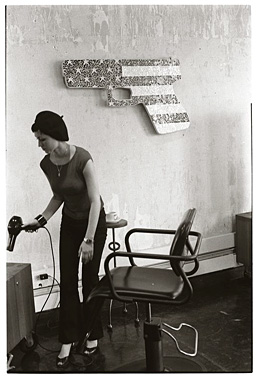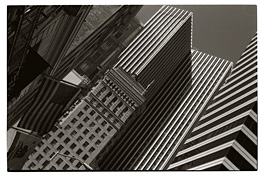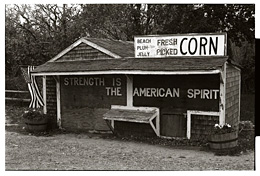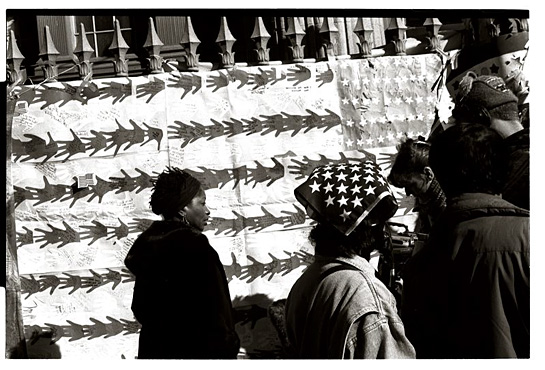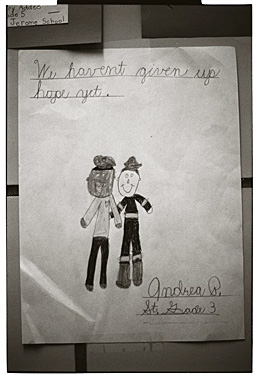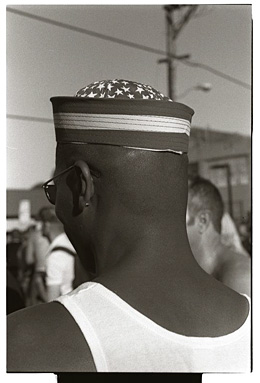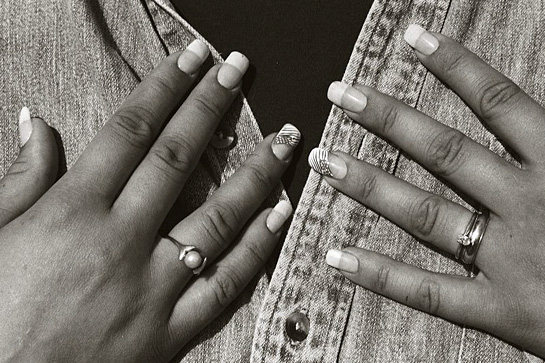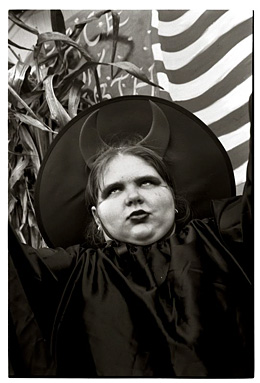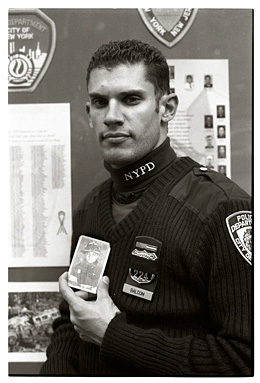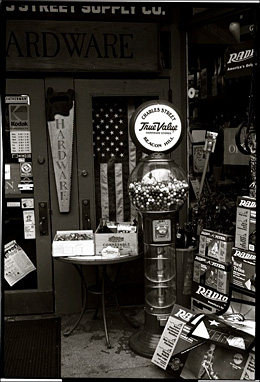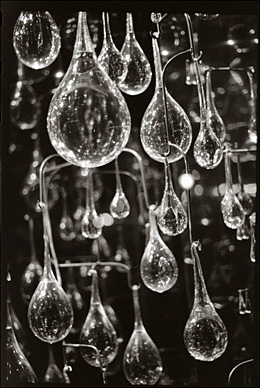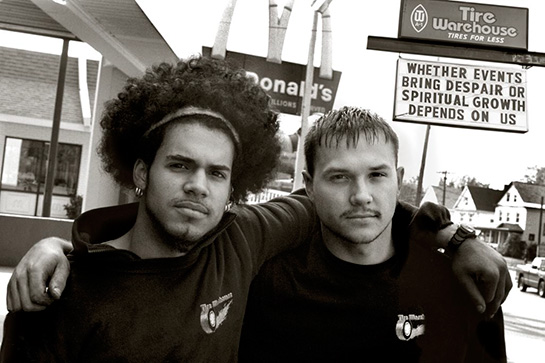|
|
|
|
|
|
|
|
|
|
||||||||||||||||||||||||||||||||||||||||||||||||||||||||||||||||||||||||||||||||||||||||||||||||||||||||||||||||||||||||||||||||||||||||||||||||||||||||||||||||||||||||||
|
|
Return to the Photography Gallery | |||||||||||||||||||||||||||||||||||||||||||||||||||||||||||||||||||||||||||||||||||||||||||||||||||||||||||||||||||||||||||||||||||||||||||||||||||||||||||||||||||||||||||||||||
The JourneyAn essay by the photographer Roger Arvid Anderson, March 2009 I was rummaging through my storage unit recently and came across a rumpled brown paper bag. Feeling its weight I opened it and discovered three pairs of beat-up shoes with scuffed toes and worn out heels. I sighed. These were the shoes that walked the walk, as I crisscrossed America for over a year after the tumultuous events of 9/11. These noble soles carried me as well as my cameras through crowded cities and quiet villages from as far as Cape Cod on the Atlantic to the Santa Monica Pier on the Pacific. No wonder I couldn’t bear to throw them away. History has its shadows and every generation has its questions: where were you when Pearl Harbor happened? Where were you when President Kennedy was shot? Where were you when 9/11 took us by surprise? I happened to be in Minnesota visiting my mother in the family home. I was still sleeping when my brother started banging on the bedroom door. Like so many others across the world I spent the day glued to the television set watching the twin towers burn and then collapse. And like so many others I watched over and over again the terrifying footage of those planes dropping from the sky on what was otherwise a brisk blue day in September. Life takes us on many journeys, some we share with others and some we take alone. I had no idea that morning that I was about to start on a journey that would prove to be both personal and universal. As an artist I work in many mediums. One of them is sculpture. But being a photographer as well I’ve learned to keep an extra camera at the foundry so I can quickly catch those candid moments that go into the volcanic process of casting bronze. When 9/11 happened, not only was I poised, I was also primed by my passion for street photography. I like to take what I call “photo-walks”. It’s an attitude informed by a sense of freedom. Walt Whitman’s “Song of the Open Road” is my poetic cue as I grab my cameras and set out. The point is to be open to the road and open to discovery. By chance I, and a friend from St. Paul, had a “photo-walk” planned for the Wednesday after 9/11. We decided to keep our date. I have a penchant for signs and urban detritus, which can often carry a gritty but psychological subtext. We were strolling through an industrial section of Minneapolis when I came upon a rusted iron door emblazoned with the warning: Danger High Voltage. I thought of the smoking towers, and in retrospect took the first picture of my essay on America after 9/11. Moving on to another site we came upon a police station with its flag at half mast, followed by a storefront where someone had put up a placard: Pray for the Victims. |
Superman
|
|||||||||||||||||||||||||||||||||||||||||||||||||||||||||||||||||||||||||||||||||||||||||||||||||||||||||||||||||||||||||||||||||||||||||||||||||||||||||||||||||||||||||||||||||
Pray for Victims |
||||||||||||||||||||||||||||||||||||||||||||||||||||||||||||||||||||||||||||||||||||||||||||||||||||||||||||||||||||||||||||||||||||||||||||||||||||||||||||||||||||||||||||||||||
|
Screenwriters talk of an inciting incident, that moment near the beginning of a film when it becomes clear that the crisis at hand is about to turn into a journey. For me the place was San Francisco, the time: late September. I had returned by then to my apartment on Russian Hill where my four windows overlook the broad expanse of the bay. My neighborhood has already been severely rattled twice by major earthquakes. 1906, I of course missed, but 1989 found me home. So I am no stranger to catastrophe. Yet on a clear night I still like to watch the ocean liners light up the piers. On a foggy night I can hear the horn on Alcatraz. Nevertheless that September I sensed something had changed. I couldn’t help but notice that the corner deli had put up a flag so huge it dwarfed the door. Up and down the street I spotted even more flags and just as many signs. I pulled out a camera and decided it was time to take a “photo-walk” downtown. “Man, what do you see there?” The voice had an electric crackle to it: Danger High Voltage. However when I turned around I saw a pair of enormous black hands resting calmly on the lap of an old man in an elegant black beret. His name was Raymond Blanch. He’s gone now but back in 2001 he ran the shoeshine stand on a fashionable section of Post Street near Union Square. I happened to be shooting the complicated geometry the sun was making of some boards and shadows in an empty store window. I was thinking of my essay “Window-shopping” or another one called “Shadow Boxing”. A photographer is an inveterate collector of images. In this case it was a compelling abstraction. Raymond Blanch was not impressed and gave me a long look. Noting his distain I pointed to the little flag flapping on his stand. I told him the American flag was not only a national symbol but also a compelling abstraction whose fifty stars and thirteen stripes made for some fairly complicated geometry. That’s when it suddenly dawned on me, “Would you mind?” “I suppose you’ll be wanting the flag in the picture!” And just like that, I was snapping away. When I finally looked up from my camera I had to admit, “I think you’ve started something!” Blanche cocked his head and cracked a smile, “Lots of flags out there, man. You’re gonna be one busy dude.” For well over a year I was indeed one busy dude. For the record, and that’s what it is, I decided to pack one if not two cameras every day. Call it “carpe diem”, but if a moment can be seized that’s what I did and that’s what cameras do best. I found myself walking around a San Francisco that I thought I knew, but now I was seeing those familiar neighborhoods with new eyes: this time sparkling with thousands of stars. Once again I was snapping away. Perhaps I got carried away, but I also decided I wanted to visit the America I thought I knew. I wanted to visit the places I had gone as a young man. However this time I’d bring the eyes of an older man looking for the unity in the diversity of this remarkable country. As I set out I took the usual planes, cars, trains and buses, but much of it I walked. I happen to live on Union Street, but wherever I went those Union flags in one form or another never really left my sight. I know from grade school that Old Glory in the War of 1812 was a sign of defiance and is celebrated with ”the bombs bursting in air” in our national anthem, but I also learned the Star-Spangled Banner can be a sign of welcome, letting you know you’re among friends. I don’t think I’ve ever felt so ‘at home’ everywhere I traveled as I did that year. It was not a matter of red or blue, but red, white and blue. More people than you might expect told me flat-out, “We got our flag back!” Photographs often fall between a tall tale and a good cry, but at heart every photograph is a reference point with the potential to make many points. In 2001 I was 55 years old. At that age you carry a lot of baggage, and I admit I did and still do, With my white goatee and long legs I have more than a passing resemblance to Uncle Sam. Though with my scruffy cap and shaggy trousers, I’m sure more people thought of me as daffy old Johnny Appleseed coming down the pike, except my hefty satchel was loaded, not with seeds, but with two cameras and a ton of film. That’s why I like to tell people, if you care to look at my pictures, look at it this way: a long time ago I set out looking for America, but in the end America found me. And walk I did, for well over a year. A list scarcely does it justice, but think of villages in Vermont or a college town in New Hampshire. Listen to the names: Norwich, Hanover, Woodstock, Cornish... in Massachusetts: Greenfield, Northampton, Winthrop, Cambridge... exploring Boston's Freedom Trail, Beacon Hill, the old North Church, Paul Revere on a bronze horse... taking in Cape Cod and the Pilgrim’s Monument with its soaring campanile in Provincetown... onto the streets and avenues of New York City... Ground Zero and Liberty Street, the fence behind St. Paul’s Chapel... Independence Hall in Philadelphia and Chadds Ford in The Brandywine River Valley... a day to myself on the Kuerner Farm where Andrew Wyeth painted... add to that the narrow streets of Georgetown or the grand mall leading to the Capitol in Washington, D.C... a spring day on Summit Avenue in St. Paul and a windy one by Hennepin Falls in Minneapolis. Whenever I look at a map I realize that was the year I found myself on the Atlantic, the Mississippi and the Pacific. That included not only San Francisco but Los Angeles too: Rodeo Drive or snapping away on sunny Sunset Boulevard, followed by a cool, foggy day on the Santa Monica Pier... from sea to shining sea. One art informs another and for a photographer that can be what I call the poetry of the streets. Of course, language in some form or another is really everywhere you care to look: the inscriptions on monuments, the graphics on billboards, the various messages or directions on placards and signs. Ultimately it’s all about what you to choose to see. In my case the connection was 9/11. I’ll never forget all the walls of cards I discovered with snapshots attached to the names of the missing. I photographed numerous children’s drawings that were both imaginative and touching to the point of an elemental eloquence. I photographed letters and autographed banners that could range from the perfunctory to the profound. I found how the oldest clichés attached to grieving still had the unexpected power to make you ache all over again. America may be a place, but it’s also a people. People gave me lifts. People gave me directions. Some I photographed from a distance. Some close-up. Some shared stories and some just a smile... In New York City I remember the firemen of the East 85th Street Station. They allowed me to shoot the artwork in and around the station. A young policeman also comes to mind. He saw me photographing Fausto and his young daughter. They had come all the way from Southern California to work as volunteers in the soup and sandwich kitchen at Ground Zero. After I had finished my shoot, the young policeman came over and introduced himself. He asked if I’d like to photograph the memorial to the policeman that was posted by the kitchen door. I of course said yes. He told me that he and his best buddy had just graduated from the academy. 9/11 was their first assignment. That’s when he took off his cap and pulled out an identity card from inside the rim. “My buddy never came back.” There I was holding back tears. Words left me. It was like facing the wall of the missing all over again, another photo among the three thousand dead. No photograph is neutral. No face is without a story. November 23, 2002... It’s over a year and despite my considerable travels I’m back in New York City for the third time since 9/11. It’s the week before Thanksgiving and I found myself at the center of the world, which is what I call 57th and Fifth Avenue. The heels are wearing thin on my third pair of shoes. It’s twilight. It’s cold and I’m in something of a mood. The flag next to Tiffany’s is still up. Once again I put down my bag and pulled out a camera. Call it the adrenaline rush you feel at the finish line, but that’s what I felt as I wrestled into one overhead shot both the flag and the giant snowflake illuminating this fabled intersection. But frankly that was not the end I had in mind. Who knows what makes you turn a corner? But there it was on 58th Street. Another store window! Not an empty one with boards and shadows like the window on Post Street a year ago. No, this time the window was full from floor to ceiling, in fact it was overflowing and at the same time blazing, not with stars but with scores of crystal drops taken from antique chandeliers. Like everyone else in the country I was no longer just a witness. I too had shared in the cycle of anger, grief and gratitude. Yet in the face of so much courage and sacrifice, how do you say a final thank you? How much can a poem or a photograph really do and say? Still we try. Yes, it was twilight and yes, I was down to my last roll of film for the day. A journey may be its own reward, but at that moment I had to focus on what was before me: scores of crystal drops sparkling like tears, come at last, filling if not overwhelming my window on the world. |
Dog Howling
Guy with Shovel
Raymond Blanch Hands
Wire Fence
Cross at Ground Zero
Foundry Worker
|
|||||||||||||||||||||||||||||||||||||||||||||||||||||||||||||||||||||||||||||||||||||||||||||||||||||||||||||||||||||||||||||||||||||||||||||||||||||||||||||||||||||||||||||||||
|
||||||||||||||||||||||||||||||||||||||||||||||||||||||||||||||||||||||||||||||||||||||||||||||||||||||||||||||||||||||||||||||||||||||||||||||||||||||||||||||||||||||||||||||||||
Images and text © 2011-2 Roger Arvid Anderson, All Rights Reserved |
||||||||||||||||||||||||||||||||||||||||||||||||||||||||||||||||||||||||||||||||||||||||||||||||||||||||||||||||||||||||||||||||||||||||||||||||||||||||||||||||||||||||||||||||||
